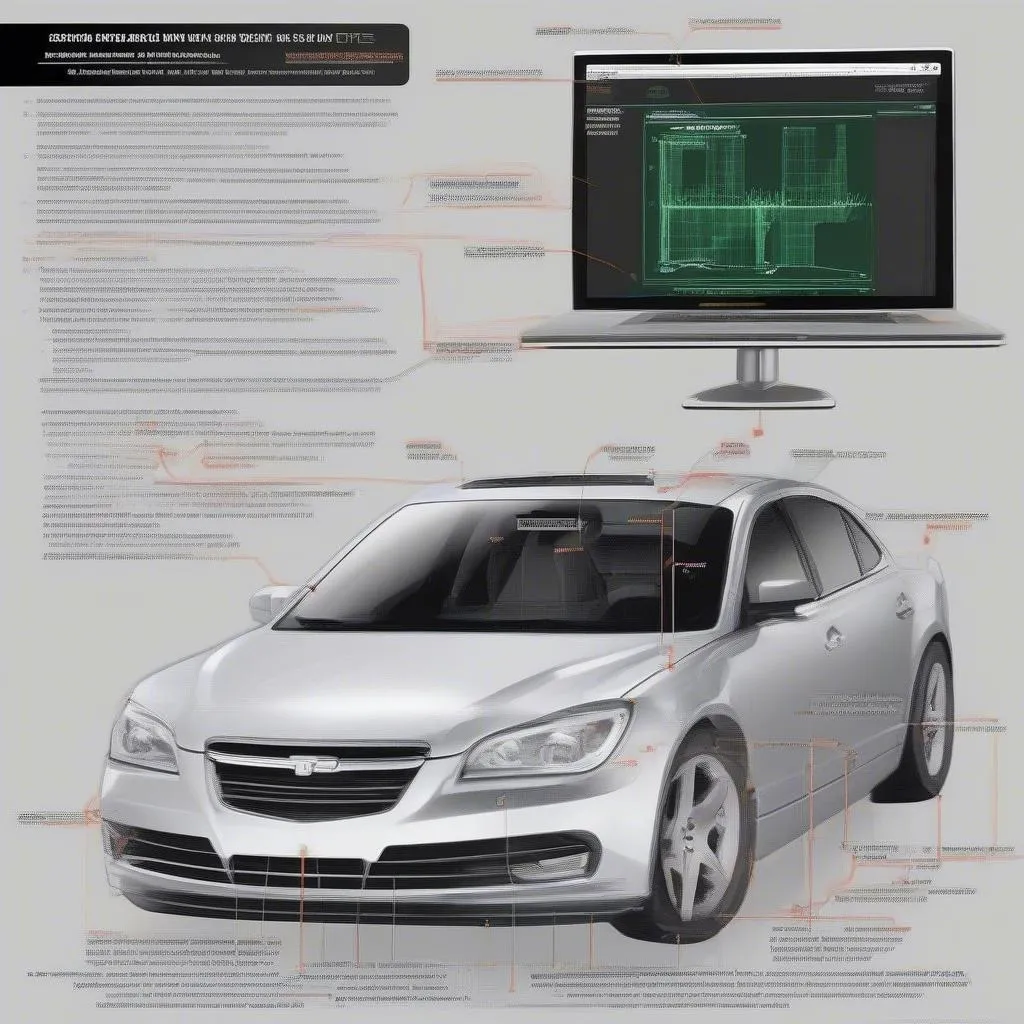Imagine this: you’re driving your car, and suddenly, the engine starts sputtering and running rough. You check the dashboard, and a dreaded “Check Engine” light flashes at you. The culprit? A faulty front oxygen sensor (O2 sensor).
While this might sound like a daunting problem, fear not! With the help of a scan tool, you can easily diagnose a bad front O2 sensor and get your car back on the road. Let’s dive in!
Understanding the Importance of the Front O2 Sensor
The front O2 sensor is a crucial component of your car’s exhaust system. It acts like a sniffer, constantly monitoring the amount of oxygen in the exhaust gases leaving your engine.
Why This Matters
The information the O2 sensor provides is vital for the engine’s control system. The control system uses this data to adjust the fuel-air mixture, ensuring your car runs smoothly and efficiently. A faulty O2 sensor can lead to:
- Reduced Fuel Efficiency: An inaccurate reading from the O2 sensor can cause your engine to run rich (too much fuel) or lean (too little fuel), wasting gas and increasing emissions.
- Engine Misfires: An O2 sensor malfunction can lead to engine misfires, resulting in rough idle, hesitation, and even engine damage.
- Increased Emissions: A bad O2 sensor can cause your car to emit higher levels of harmful pollutants, contributing to air pollution.
Diagnosing a Bad Front O2 Sensor with a Scan Tool
What is a Scan Tool?
A scan tool is a diagnostic device that connects to your car’s onboard computer system. It reads and interprets the data stored in the system, allowing you to diagnose problems and troubleshoot potential issues.
Think of it like a doctor for your car! Just like a doctor uses a stethoscope to listen to your heartbeat, a scan tool listens to your car’s electronic signals and provides valuable insights into its health.
The Diagnosis Process
-
Connect the Scan Tool: Connect the scan tool to your car’s onboard diagnostic port (OBD-II port), usually located under the dashboard near the steering column.
-
Retrieve Diagnostic Codes: The scan tool will access your car’s computer system and retrieve any diagnostic trouble codes (DTCs). These codes are like secret messages that tell you which system or component is malfunctioning.
-
Identify the Fault: Look for DTCs related to the front O2 sensor. These codes typically start with “P” followed by a four-digit code. For example, P0131 and P0133 usually indicate a problem with the front O2 sensor.
-
Confirm the Diagnosis: To confirm a faulty front O2 sensor, you can also check the sensor’s voltage readings on the scan tool. A functioning O2 sensor should alternate between high and low voltage readings, indicating that it’s accurately sensing the oxygen content in the exhaust.
Common Scenarios and Troubleshooting Tips
Scenario 1: “The scan tool shows a DTC for a bad front O2 sensor, but the engine seems to run fine.”
In this case, the O2 sensor might be starting to fail but isn’t causing any major problems yet. It’s best to replace the sensor sooner rather than later to prevent future issues.
Scenario 2: “The scan tool shows a DTC for a bad front O2 sensor, and the engine is running rough.”
This indicates a more serious problem, and replacing the O2 sensor is crucial to restore normal engine function.
How to Replace a Bad Front O2 Sensor
Replacing a front O2 sensor is generally a DIY job for experienced mechanics. However, if you’re unsure, it’s best to consult a professional mechanic.
Remember: Always consult your car’s owner’s manual or a trusted repair manual for specific instructions and guidance.
Some helpful tips:
- Locate the Sensor: Find the front O2 sensor, typically located on the exhaust manifold near the engine.
- Disconnect the Wiring: Disconnect the electrical connector from the sensor.
- Remove the Old Sensor: Use a wrench to unscrew the old sensor from the exhaust manifold.
- Install the New Sensor: Screw in the new O2 sensor, ensuring it’s tightly secured.
- Reconnect the Wiring: Reconnect the electrical connector to the new sensor.
- Clear the DTCs: Use your scan tool to clear any stored diagnostic trouble codes.
FAQ
Q: How often should I replace my front O2 sensor?
A: The lifespan of an O2 sensor varies, but it typically lasts between 60,000 and 100,000 miles. It’s a good idea to have it inspected every 30,000 miles.
Q: Can I drive with a bad front O2 sensor?
A: While you might be able to drive for a short period, it’s not recommended. A faulty O2 sensor can affect your car’s performance, fuel efficiency, and emissions.
Q: What happens if I ignore a bad O2 sensor?
A: Ignoring a bad O2 sensor can lead to serious engine problems, including misfires, reduced fuel efficiency, and increased emissions.
Q: Are there any other indicators of a bad front O2 sensor besides the “Check Engine” light?
A: Other symptoms include rough idling, decreased fuel efficiency, and a reduction in engine power.
Further Exploration
If you’re looking to learn more about car diagnostics, here are some helpful resources:
- Read more about troubleshooting car problems with scan tools.
- Discover the different types of scan tools available.
Connect With Us
For assistance with diagnostics tools and any questions about your car’s electrical system, feel free to reach out to our team of experts. We’re available 24/7 via WhatsApp: +84767531508.
Don’t hesitate to reach out! We’re here to help you keep your car running smoothly.
 oxygen sensor
oxygen sensor
 scan tool
scan tool
 check engine light
check engine light


